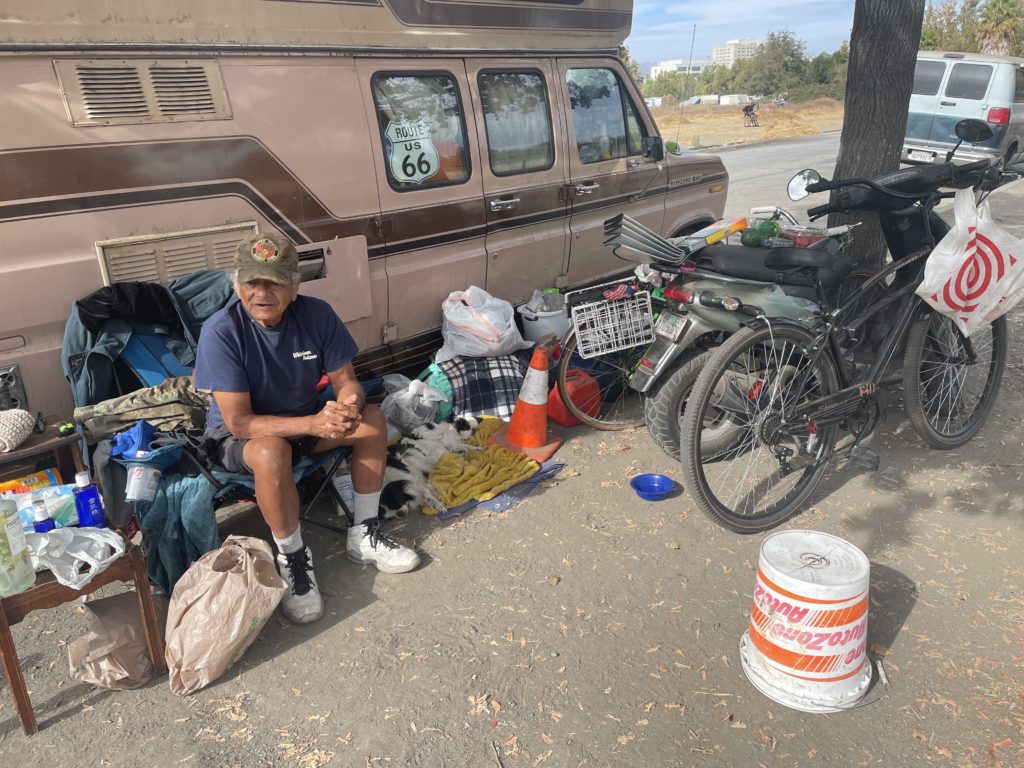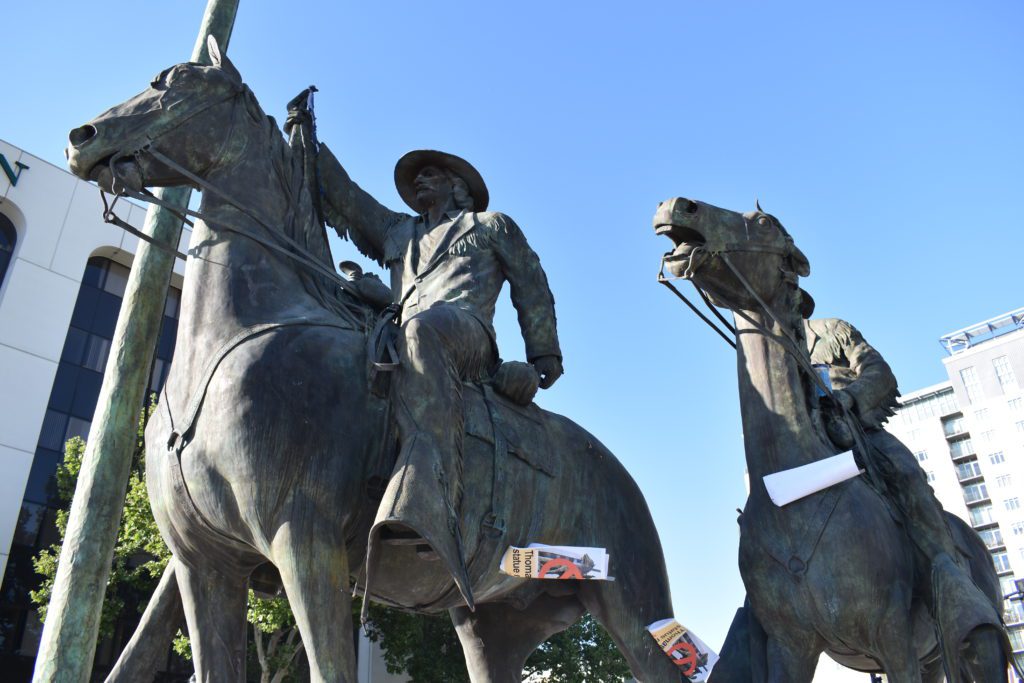As the COVID-19 pandemic continues to upend lives in the heart of Silicon Valley, San Jose lawmakers marked 2021 as a momentous year with a wide array of major decisions that will have lasting impacts for years to come.
The San Jose City Council took steps to address its growing homelessness and housing crises, while advancing strong climate initiatives and gun violence measures in the wake of the VTA mass shooting in May. San Jose also finished redrawing its new political boundaries after months of messy process.
Here are the biggest takeaways from this year’s leading policy changes.
Redistricting
In December, San Jose lawmakers made the most consequential decisions this year by redrawing the city’s political boundaries—changes that will redefine the local political landscape for the next decade.
The City Council voted 7-4 to adopt a map initially proposed by Councilmember David Cohen. His map served as a compromise of the three options advanced by the 11-member Redistricting Commission.
The map drastically redraws the boundaries of Districts 2 and 10, but preserves most of the existing lines for Districts 5, 7 and 8 on the East Side. District 6 will also absorb Mineta San Jose International Airport, located in District 3 for the past decade.

Opportunity Housing and SB 9
After more than a year of intense debate over a proposed policy that would allow San Jose to build denser, the City Council voted 9-2 this month to abandon Opportunity Housing in favor of implementing Senate Bill 9, a state initiative with similar scope. The housing measure has been controversial in San Jose, as more than 4,000 residents signed a petition opposing the state law.
City officials said sweeping changes in single-family neighborhoods are unlikely due to financial and site limitations, adding that some provisions of SB 9 remain murky. Advocates and renters said the law is a vital step for addressing the city’s growing housing crisis.
Homelessness
The homelessness crisis took center stage in local politics as more people are being pushed out on the streets. Tensions between homeowners and unhoused residents hit a boiling point this year, while officials scrambled to address the growing issue.
Here are some initiatives policymakers worked on.
Project Homekey: San Jose is eyeing converting 372 hotel and motel rooms into housing for homeless residents and building another 176 units through a $2.75 billion state program. The units are much cheaper—and faster—to build, officials said. The city is already looking to expand the effort through two other motels.
Untraditional housing sites: Local lawmakers had to get creative to find new housing sites this year. New housing projects will pop up in unorthodox places such as a parking lot at the San Jose Police Department headquarters and land owned by a local church. The city also explored building homeless housing by highway on-ramps or cloverleaf interchanges.
Sanctioned encampments: Despite pleas from advocates, the City Council unanimously voted to reject a proposal of establishing sanctioned encampments in May. City officials warned San Jose didn’t have enough resources to manage such camps, while Mayor Sam Liccardo wanted the city to continue existing programs.
Camp sweeps: San Jose halted encampment removals early in the pandemic out of concerns of COVID-19 spread. But as camps grew in size and visibility, the city started to sweep homeless encampments regularly again and voted earlier this year to make it a priority. The city swept more than 200 camps between January and November this year.

Gun reform
Following the deadliest mass shooting in the history of the Bay Area, San Jose lawmakers adopted a host of sweeping gun reforms, including a requirement to record firearm purchases and preventative measures of so-called “straw purchases.”
Under the new policies, buying a gun from or inside a residence is prohibited. Gun shops will also be required to question potential buyers to prevent a legally purchased firearm being passed off to someone else who should not own a weapon.
The City Council also voted to explore mandating gun insurance and an annual fee on gun owners to cover gun violence costs—measures that have yet to be enforced and will likely be challenged in court.
Going carbon neutral
San Jose made history in early November by becoming the largest U.S. city to set an ambitious goal to go carbon neutral by the end of the decade—with details to be hashed out. San Jose declared a climate emergency back in 2019 and also voted to ban natural gas in commercial buildings in 2020. The unanimous vote last month reinforced San Jose’s ambition as a national leader in the fight against climate change.
Google approval
After more than three years of negotiations, one of the world’s largest tech giants received the city’s approval this year to build a massive campus in downtown San Jose.
The San Jose City Council voted unanimously in May to approve Google’s Downtown West project, a multi-billion dollar plan by the company to expand into downtown San Jose.
The project, first proposed by the tech giant in 2019, spans 80 acres near Diridon Station and features 7.3 million square feet of office space, 4,000 housing units, 15 acres of parks and a 30,000-50,000-square foot community center. It also boasts 500,000 square feet for retail, cultural, education and arts uses. A quarter of housing units in the area will be affordable.
It is the largest development in San Jose history.
Flea Market
In unanimous support for the Berryessa BART Urban Village, local lawmakers voted to shrink the historic flea market’s footprint from 15 acres to five, squeezing out business owners who rely on the market to make ends meet. The project will make room for 3,450 new homes and expand commercial space to as much as 3.4 million square feet.
The Berryessa Flea Market Vendors Association—a loose-knit group of vendors—protested against the proposal, holding rallies and staging a hunger strike ahead of the city’s decision. As part of the final agreement, owners of the flea market agreed to give $5 million to help vendors relocate. After some delay, vendors are expected to get a first installment of $500,000 next week.

Coyote Valley
Local environmentalists rejoiced in November after San Jose lawmakers unanimously voted to protect the Coyote Valley area from “Amazon-style” warehouses. Coyote Valley is one of the last intact valley connections between the Santa Cruz and Diablo mountain ranges, and accounts for roughly 50% of aquifer recharging areas in Silicon Valley. Portions of the land were planned to be sold to a real estate developer to build two warehouses.

Fallon statute removal
The statute depicting Capt. Thomas Fallon raising the U.S. flag on what was then Mexican land in 1846 will be removed after decades of debate. The City Council unanimously voted in November to retire the controversial bronze sculpture in downtown San Jose. Many see the statue as an example of colonialism and systemic racism.
Contact Tran Nguyen at [email protected] or follow @nguyenntrann on Twitter.



Leave a Reply
You must be logged in to post a comment.